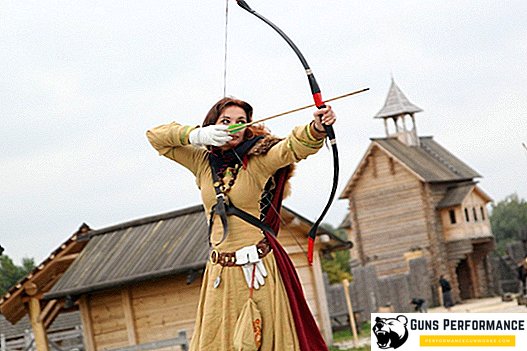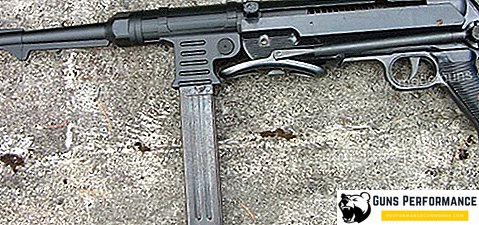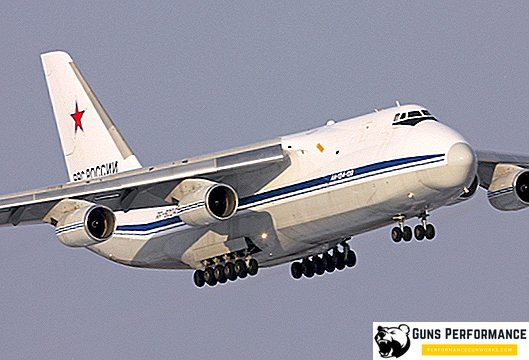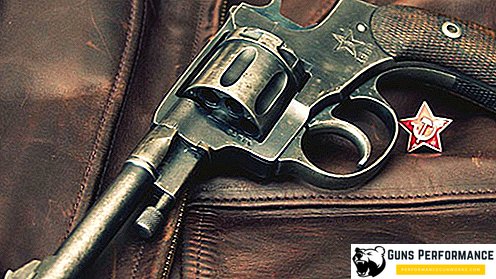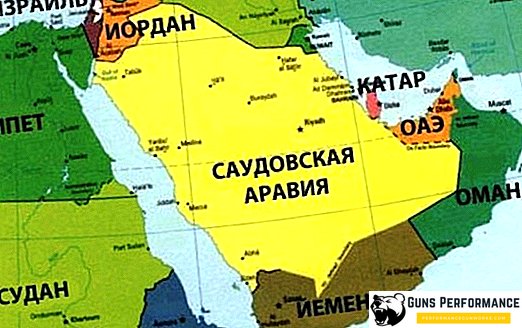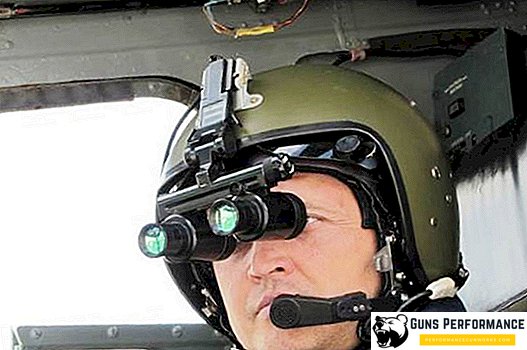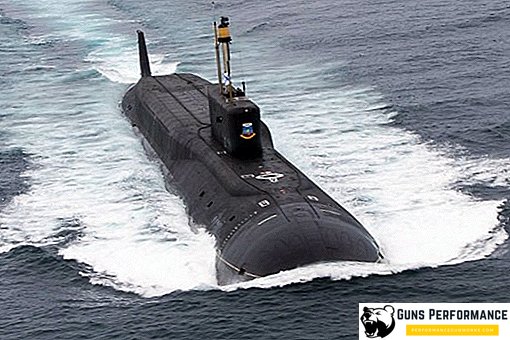In the view of the man in the street, a flamethrower is a pipe with a socket that spits out a stream of fire in the direction of the enemy. However, this stereotype has long been outdated and does not correspond to reality. The military invented to put the combustible mixture in a capsule and send it to the enemy in that form, and then set it on fire. This method is much more efficient, and safer for its own soldiers.
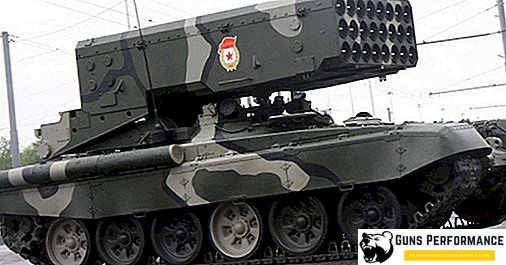
According to this principle, the Soviet infantry flamethrower "Bumblebee", as well as various types of incendiary shells, aerial bombs and missiles, work. With the invention of ammunition volumetric explosion, flamethrower systems received a "second wind".
The most famous flamethrower system, developed in the USSR, is the TOC-1 Buratino and its modification TOC-1A Solntsepek. In fact, “Buratino” and “Sunlight” are heavy multiple launch rocket systems (MLRS), similar to “Gradu”, “Tornado” and “Hurricane”, but their combat characteristics, as well as the method of use on the battlefield, allows you to select them from common group of jet installations.
History of creation
The idea of creating a heavy reactive system, which could directly support the troops on the battlefield, was born in the early 70s. It was the height of the Cold War, and both superpowers (USSR and USA) were actively exploring new ammunition for a volume explosion.
The development of the future "Buratino" was engaged Omsk "Design Bureau of Transport Engineering". The first pre-production samples of the flamethrower were created in 1979.

The flamethrower system was installed on the basis of the T-72 tank, the complex consisted of two vehicles: the combat vehicle itself (BM) and the charging vehicle, which was manufactured on the basis of the KrAZ truck. The installation was created to disable the enemy's equipment, destroy the fortifications and destroy the enemy's manpower.
The choice of a tank chassis is not accidental: the mass of the missiles along with the guides was significant, which required considerable payload. In addition, the range of TOC "Buratino" was relatively small (up to 4 km), according to the developers, it was supposed to be close to the line of contact with the enemy, and therefore needed reliable armor protection.
State tests of the flame-thrower system began in 1980, it successfully passed them and was put into service.
The Afghan war was the baptism of the flamethrower system. Two installations were sent to Afghanistan, which were actively used at the final stage of this conflict. Flamethrower system received the best reviews.
It should be noted that the volume explosion ammunition is particularly effective in mountainous areas. In such conditions, the shock waves from the explosions of a variety of ammunition overlap, interfere and multiply. They say that the Buratino fire produced a strong psychological effect on the Afghan Mujahideen.

The next conflict in which Buratino was used was the first Chechen war. The federal troops used this heavy flamethrower system in battles for the village of Komsomolskoye, it was there that it first caught the eye of journalists and became the property of the general public. There is also information that the Buratino flamethrower system was used during the storming of the city of Grozny.
Due to the strict secrecy regime around TOC-1 Buratino and TOC-1A Solntsep a large number of myths have appeared. There was a rumor that these heavy flame-throwing systems were designed for firing rockets with poisonous gases, according to other information, these installations are needed to "burn out" the territory contaminated with chemical weapons.
Why precisely "Buratino"
Why does a heavy flamethrower system have such an unusual name? Usually weapons are named after natural phenomena (most often destructive), various animals or historical weapons. Some systems of Soviet and Russian weapons are very poetic names ("Gvozdika", "Akatsiya",). But why the installation, which is designed to incinerate enemies in the literal sense of the word, was named after the main character of the children's book?

The reason for this was the shape of the rockets used by this system. Each of them has a thin fairing-detonator in the bow. In form, it is very similar to a long nose - the main distinguishing feature of Pinocchio.
This fairing is needed to create a volumetric explosion. Due to this structural feature, the ammunition does not immediately explode after hitting the surface, but first spreads around a cloud of combustible mixture and then sets it on fire. Detonation of the combustible mixture in TOS "Buratino" rockets occurs at a slower rate, but it is stretched in time and can "leak" into shelters or go around obstacles.

The main type of ammunition used by the Buratino and Solntsep installations are thermobaric rockets. The main striking factors of their action is high temperature and a strong pressure drop.
After the ammunition is undermined, a mixture of air and explosive is formed in the air. Only then, using a special charge, this mixture is ignited.
Thermobaric munitions use atmospheric oxygen as an oxidizer, so they are much more powerful than normal. Such explosions belong to the type of "burning", they do not destroy obstacles in their path, but flow around them. Such ammunition has only one damaging factor - the shock wave, they have neither fragmentation nor cumulative action. When a thermobaric ammunition is blown up, the shock wave spreads along the ground, and it is impossible to hide from it in a trench or dugout.

The temperature at the epicenter of the explosion reaches 3 thousand degrees.
TOC-1 Buratino design
The heavy flamethrower system Buratino is a complex that consists of two elements: a combat vehicle (BM) and a loading machine. BM is a launcher with guides for missiles mounted on the chassis of the T-72 tank. The tank chassis allows the flamethrower system to move easily over rough terrain. The charging machine for "Buratino" was created on the basis of the KrAZ-255B truck.
The launcher of the complex is a turntable on which the launch canister is installed, consisting of 30 guide tubes of 220 mm caliber. Targeting, changing the angle of elevation and rotation occurs at the expense of power actuators. The crew controls the shooting, without leaving the car, through the fire control system, which consists of a sight, rangefinder, roll sensor and calculator.
The range finder allows you to determine the distance to the target with an accuracy of ten meters. The obtained data is entered into the ballistic computer, which determines the angle of elevation of the launch canister. This takes into account the roll angle of the machine itself.
The total weight of the combat vehicle is 42 tons. For firing can be used as ammunition with thermobaric and incendiary warhead. Each unguided rocket weighs 175 kg, the mass of the warhead of an incendiary ammunition is 45 kg, the firing range is from 400 to 3600 meters. The weight of the warhead thermobaric ammunition is much more - 74 kg, the maximum firing range is 2700 meters.

The damage area for both types of ammunition is one hectare. TOC-1 “Buratino” and TOC-1A “SunTop” can fire single or double shots. The duration of a full volley with single launches is 12 seconds, with doubles - 6 seconds. The time to prepare the complex for firing after stopping the machine is 90 seconds.
The unguided rockets used on these flamethrowing systems consist of the warhead (it contains the combat mix) and the rear warhead with a solid propellant rocket engine. A mixture of liquid (propyl nitrate) and powder of light metals (magnesium) is used as a filler for a warhead of thermobaric ammunition. The warhead is equipped with a special device that mixes the mixture during the flight of the rocket.
Seats for the commander and the operator-gunner are located in the central part of the vehicle, and the place of the driver is in the front.
Fighting machine is equipped with equipment for samokapyvaniya and equipment for the production of smoke screens. There is protection against weapons of mass destruction.
The transport-loading vehicle (TZM) is intended for the transport of ammunition, loading and unloading a combat vehicle.
TOC-1A "Sun"
In 2001, the improved modification of the Buratino heavy flame-throwing system - TOS-1A Solntsepek was presented to the general public. In this complex, the designers tried to correct the main shortcomings of the “Buratino” - insufficient protection of the ammunition and low firing range.
The TOC-1A has a launcher consisting of 24 (and not 30) guides, the firing range increased to 6 thousand meters.

In addition, the charging machine, which is part of the TOS-1A "Solntsepek" complex, is also made on the basis of the T-72 tank, and not on the KrAZ truck.
The crew of the transport-charging vehicle consists of three people, the loading time of the ammunition load is 24 minutes. The load capacity of an electro-hydraulic crane is 1 ton. Charging machine has an additional removable reservation.
Advantages and disadvantages
Despite the rave reviews in the press, the number of flamethrower systems, which are currently in service with the Russian army, is negligible. Now TOC-1 "Buratino" and TOC-1A "Solntsepek" are in service with only three parts of the Russian army, and each of them has several units of flame throwers.
What is the reason? In the eternal Russian disorder, or is this flamethrower system not so good as journalists write about it? And there are no foreign analogues of this weapon, although there is nothing particularly revolutionary in the Buratino design. Let's figure it out.
First of all, why it was necessary to create "Buratino"? All the MLRS that were in service with the Soviet (and today the Russian) army had thermobaric ammunition in their arsenal, while shooting was conducted from relatively safe distances.
The MLRS Tornado (a further upgrade of the Grad system) can fire up to 40 km, while the MLRS Smerch hits targets with thermobaric charges at a distance of 90 km. However, the accuracy of the MLRS is often unsatisfactory.

The developers of "Buratino" wanted to create a powerful complex that could hit the enemy at the minimum distance and do it with maximum precision. "Pinocchio" and "Sun" are designed to work directly on the line of contact with the enemy, for inflicting stunning dagger strikes.
However, the use of the complex in the immediate vicinity of the enemy poses a serious danger to both the installation itself and its own troops. The firing range of the flamethrower system does not exceed 6 km, at such a distance it is vulnerable to the fire of enemy tanks, artillery and even anti-tank guided missiles. It is one thing to use TOC against guerrilla groups, such as Afghan mojaheds or Chechen militias, and quite another against a regular army that has armored vehicles and aircraft. In the latter case, such a complex is likely to be quickly destroyed, not even having time to reach the position for firing.
Even in Afghanistan, when using the Buratino TOS, against dushmans armed with small arms, flamethrower crews were strictly prescribed: to enter the battle line only under the protection of tanks and infantry and leave it immediately after the end of the shooting.
The launch canister has a reservation that withstands a hit of a 7.62 mm caliber bullet. But this is clearly not enough: modern anti-tank missile systems have a range of up to 10 km, excellent accuracy and high mobility. For any calculation of ATGM such a flamethrower system would be a desirable and rather easy target.

In combat conditions, in order to at least somehow protect the ammunition assembly from detonation, the extreme lateral guides for the projectiles were usually left unloaded. At TOC-1A "Solntsep", the designers tried to solve this problem by reducing the ammunition load and increasing the armor protection of the launch canister. However, this is unlikely to help with the hit of a projectile of serious caliber. It is terrible to even imagine what will happen when the ammunition is detonated or if the missiles are spontaneously launched.
Technical characteristics of the heavy flamethrower system "Buratino"
| Mass, t | 42 |
| Crew, pers. | 3 |
| Caliber, mm | 220 |
| Number of guides, pcs. | 30 |
| Shooting range, m: | |
| Minimum | 400 |
| Maximum | 3500 |
| Full salvo time, sec. | 7,5 |
| Engine power, l. with. | 840 |
| Maximum speed, km / h | 60 |
| Cruising on the highway, km | 550 |
| Overcoming obstacles: | |
| wall height, m | 0,8 |
| pit width, m | 2,7 |
| ford depth, m | 1,2 |
| rise, hail | 32 |


